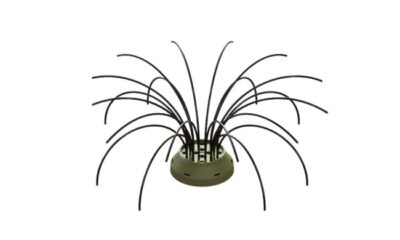Accessories
What Kind of Rope to Carry
If you regularly go out for hiking or on hunting trips, you would know the importance of carrying a rope with you.

A good, strong rope can come in handy in many kinds of survival and hunting situations.
Here is a review of the kinds of cordage available that you can take on a trip.
Twisted Rope

Twisted rope is the most common and simplest type of rope. It has been around for thousands of years and still being made in the same way that our ancestors made it. A regular rope is created by spinning a lot of fibers or yarn together to make thicker strands. A few strands are then twisted together to create a rope.
This kind of rope is not the strongest you can get. The strands tend to break after a few uses making it unreliable for extended use in the outdoors.
On the plus side, it is very visible and cheap. You can make a similar rope out of fibrous plants in a survival situation. Despite its weakness, a twisted rope can still fulfill some of your basic requirements such as tying up packages or holding things, like a tent, in place.
Braided Rope

A modern, double braided rope is an upgrade to the common rope. The individual strands of fiber are covered by a jacket which provides slightly better protection.
They are usually made with nylon, polyester or polypropylene. The rope has a central inner braid which is often made of a stronger material that can sustain an impact. The outer braids are designed to be resistant to abrasion.
A braided rope is reasonably strong, water resistant and shock absorbent. It is slightly heavier to carry and can be used for tying, securing, trapping and pulling. It will get the job done for every one of your adventuring needs and is one of the must-have tools in your survival kit.
Parachute Cord

Parachute cord type – III, also known as 550-cord is a military class or paracord, is an all-purpose cordage that is easily the best kind of rope to have for outdoor survival. The cord was originally designed for use in parachutes by the German military.
It consists of a high number of interwoven nylon strands, covered by a braided nylon sheath. The sheath protects the cord inner from abrasions while also give the cord a fairly bit of elasticity.
A typical cord is about one-eighth of an inch in diameter and has a breaking strength of 550lbs. It can be used multiple times and for a long time without abrasions.
Parachute cord is incredibly light to carry given its strength. A typical 200 feet cord weighs less than a pound. The cord is water resistant and can absorb plenty of shock. The cord can be turned into a Paracord bracelet for ease of carrying around.
Climbing Rope

A climbing rope is effective for its sturdiness and shock absorbing qualities. It is an essential travelling tool used by mountaineers for climbing and designed around the idea of safety.
A mountain rope has a kernmantle (core jacket) design similar to a parachute cord. The inner core provides strength while the jacket prevents wear and tear. A typical climbing rope has a higher elasticity than a P-cord which gives it the shock resistance in case of a fall.
Mountain ropes come in different varieties such as a single, double, half or static ropes that are good for different kinds of climbing needs.
The most important thing to look for in a climbing rope is its safety feature. Climbing ropes are tested by UIAA, the international mountaineering and climbing federation to assess for fall rating, static and dynamic elongation as well impact force.
Guyline Cord

A guyline is thinner than a P-cord (about 2 mm) with no covering sheath to protect it from wear and tear. It is used for putting up tents, tarps and hammocks.
The cord was historically used in ships as rigging for masts and attached to anchors. It is reasonably sturdy and a good means of keeping things secure. However, it is not meant for absorbing shocks and can break under stress so it has limited usage.
Tow Strap

This isn’t exactly a type of rope but a tow strap can come in handy in specific situations. A tow strap can be attached to bumpers or tow hooks and used for towing and recovery of vehicles. A typical strap can pull up to 5000 lbs and is an important tool in an emergency survival kit.
Usually made of nylon, the flat shaped tow straps are not very elastic and impacts on the straps can wear them out after a few uses.
Bungee Cord

A bungee cord can be useful in certain conditions. This cord has a lot of elasticity. Even a short cord can be stretched to bundle together a variety of items such as a sleeping mattress or a bunch of sticks.
In Conclusion

Having the right rope in your backpack is crucial for ensuring that your trip into the wilderness is smooth and without hiccups. We hope that this post helped you understand the pros and cons of the most common types of ropes, and helped you choose the right one. Happy hiking and hunting!
-

 Adventure1 month ago
Adventure1 month agoDoes the “Big Beautiful Bill” Have a Public-Lands Wart?
-

 Adventure2 months ago
Adventure2 months agoHowling in Cuckoo: How Mexican Wolves are Fostered
-

 Adventure2 weeks ago
Adventure2 weeks agoREACTION: Trump’s Make America Beautiful Again Agenda
-

 Gear3 weeks ago
Gear3 weeks agoLet Freedom RING! Primary Arms’ Independence Day Category Sale Starts NOW
-

 Adventure4 weeks ago
Adventure4 weeks agoU.S. Bighorn Sheep Going Home to Canada
-

 Adventure1 month ago
Adventure1 month agoYour Dream Hunt Could Be a Movie & Leupold Can Help
-

 Fishing11 hours ago
Fishing11 hours agoMy Wacky Bush Brings All the Bass to the Yard
